Connecting Intelligence
Imagine a scenario. As you leave for work, your car accesses your phone calendar to determine the destination you’re headed for and already knows the shortest and fastest route to take. In case you encounter heavy traffic, the car automatically notifies your office that you are running late! While this might seem like a clip from a futuristic movie, scenarios like these are already taking shape. Enter the world of Internet of Things, popularly referred to as IoT.
So far the internet had mostly connected people to information, people to people, and people to business. Now IoT is creating open, global networks that will connect people, data and machines with each other. According to recent reports, at the end of 2017 there were 8.4 billion connected entities (‘things’) across the globe — more than the total human population on earth! By 2020, different surveys project this number to be between an astounding 26- 100 billion connected devices. The last few years have seen an increased momentum and buzz around big data, and more recently, artificial intelligence (AI). Both of these are powered by the intricate network of connected devices that collect and process information at the backend and contextualise it with societal, industrial, and scientific practices while collectively changing how data, knowledge, and innovation are currently produced and consumed. Simply said, IoT is a collection of all the devices which can connect to the internet and ‘talk’ to one another!
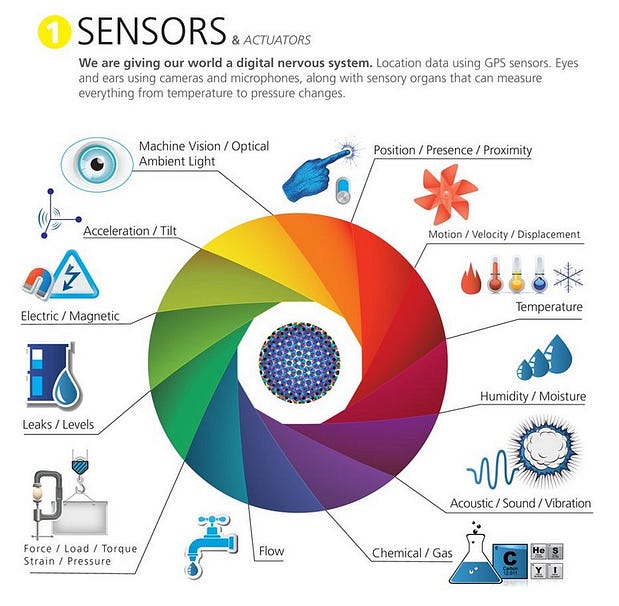
Source: Black box paradox
In 1999 when Kevin Ashton, a British technology pioneer, coined the term ‘Internet of Things’ he differentiated computers beyond typical barcoding or execution of predetermined scripts, to prototypes which could gather more information than was manually possible and also make sense of it. This process, in turn, makes them smarter!
The interface between the virtual and the physical world is nothing short of a digital nervous system with sensors and actuators collecting varied types of data and feeding it into the network.
The IoT Structure
Typically the IoT structure comprises the hardware, the cloud, the backend analytics and the bidirectional interactions between these three components. It is a hyper-connected computing environment that builds on the following: (1) Broadband wireless internet connectivity; (2) Miniaturised sensors built into everyday objects; and (3) Collaborative robots (Cobots), supported by AI and machine learning, interpreting the Big Data collected by the sensors.
The grid of connected simple end devices, called sensors, receives or transmit small amount of data. These sensors communicate with the propagators, the site for protocol intelligence. Propagators decide how to manage the data while it collects, prunes, bundles and transmits it to the internet where the integrators analyse and act upon it. Integrator functions may be hosted on a wide range of general purpose or broadly deployed devices or computers such as Big Data servers, Smartphones, or even the Set Top Boxes.
The grid of sensors, propagators and integrators may act autonomously or with manual guidance. When the complexity of sense making exceeds a certain threshold or requires tactic contextual information, the data may be sent for analysis by human intelligence. After the requisite contextualisation the analytics may be sent back to the cobots.

The Perfect Storm!
Consider this, today broadband internet is becoming more widely available with 4G soon transitioning to 5G and 6G; the cost of connecting is decreasing, more devices are being created with wi-fi capabilities and in-built sensors; technology development costs are plummeting, and smartphone penetration is on an all-time high.
Dr. Bala Pesala, Principal Scientist, CSIR and Associate Professor, AcSIR; and Dr. Madan Lakshmanan, Senior Scientist, CSIR and Assistant Professor, AcSIR, explain that in the recent past, advancement in different segments such as availability of low-priced sensors and computational devices, ease of connectivity and data-collection and a world where business/ commercial players and policymakers are relying more and more on data analysis and analytics has created a niche for IoT and IoT-based applications. In short, things couldn’t have been better for an IoT revolution!
Until everything is connected to everything else
It is estimated that our interaction with connected things is more outside our homes than inside of it; right from the ubiquitous Automated Teller Machines (ATMs) disbursing cash, to GPSbased location sensing to help our everyday navigation. Ranging in size from miniscule grainsized bots to mammoth sized devices for smart cities, IoT has percolated everyday lives and it continues to expand around us. Suddenly, the idea of a smart city, or further still, a smart world, where IoT creates a parallel virtual ecosystem, does not seem too distant anymore.

The possibilities are virtually endless; IoT solutions are widely deployed in many sectors including automotive, transportation, smart homes, energy, utility, security, surveillance, public safety, financial services, retail, healthcare, industrial, warehousing and distribution. It is not just enhancing present day capacities but also determining how to improve everyday living.
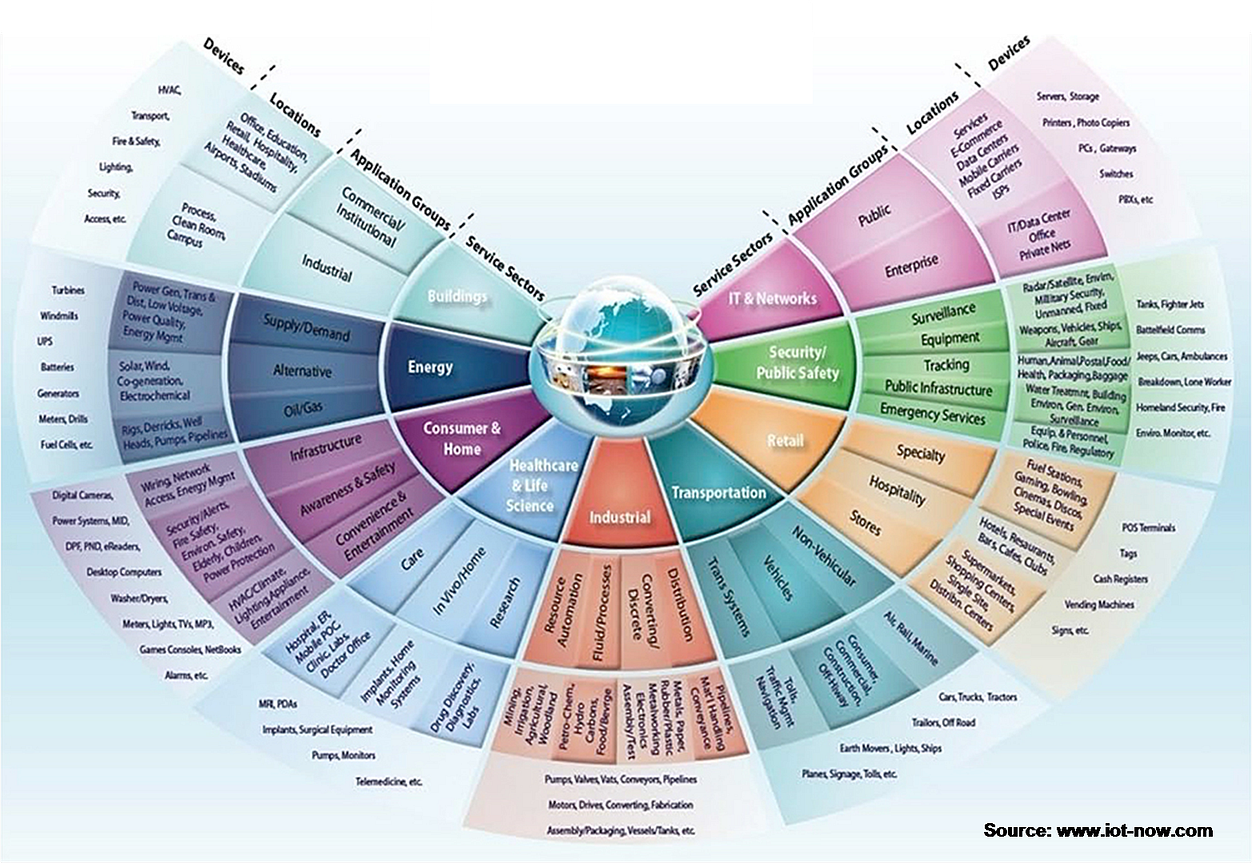
Dr. Pesala and Dr. Lakshmanan explain that IoT is making a huge difference in logistics, agriculture (“Seed to Shelf”), energy, and healthcare. Resonating with the idea “What cannot be measured cannot be controlled”, they further add that IoT systems enable measuring things continuously through which ‘on the spot’ data-driven decisions can be made.
Gathering Momentum
Even though we’re at present in the nascent stage of designing and implementing IoT capacities, a few blockbuster stories have already made headlines and point yet again to the immense potential of this technology.
Audit and assessments of the braking system of the popular underground tube network in London required expensive and cumbersome equipment to test and further required keeping the trains out of circulation, which is a costly disruption of network. A small IoT device, a Decelerator, controlled with an iPAD was prototyped and was shown to not only be as effective as the conventional brake assessment technology but is projected to save $500,000 annually with minimal or no disruption of services.
Dr. Pesala and Dr. Lakshmanan, whose laboratory has been working on IoT-enabled devices for continuous healthcare monitoring and early warning systems on the one hand, and IoT-enabled solar tree for decentralised power generation, distributed sensing and surveillance applications on the other, point to two other exemplars — Self-driving electric cars by Waymo and automatic precise irrigation and fertigation system by Flybird Innovations. The former has been in operation since 2009 with self-driven cars covering nearly 8 million kilometres on city roads. This builds on 4.3 billion kilometres they drove in simulation in 2017 alone. This aims at developing comfortable and safe driverless cars of the future. On the other end, Flybird Innovations is creating IoT devices that are programmed to regulate water and fertiliser soil moisture/temperature/humidity. This will prevent the under- and over irrigation and fertigation of crops/plants, which will in turn enhance crop yield and productivity for the farmer.
Energy and healthcare sectors have been two main sectors designing and deploying IoTbased solutions in a big way. Let’s zoom in into these to understand this better.
Internet of watts: Smart grids to address new-age energy requirements

Energy requirements are expected to double by 2020 which will require additional electricity flow options and addon infrastructure to complement the existing legacy infrastructure. Additionally, many countries and the European Union (EU) have issued directive of reducing carbon emission and shifting to renewable sources of energy, at least ‘20% by 2020’, while increasing energy efficiency. This highlights the need to establish innovative frameworks utilising renewable green energy sources. It is here that IoT integration can transform the equation by establishing smart grids — an energy generation, transmission and distribution network enhanced by digital control, monitoring and telecommunications capabilities. It can do so by (i) Increasing resilience — by increasing data from sensors; (ii) Enablement — using data to manage resources; and (iii) Optimisation — enabling stakeholders to make informed decision on power usage and generation. This creates an Information Value Loop (IVL) for enhancing capacities.
Smart grid not only provides realtime, two-way flow of electrical power, it also enables automated, bidirectional flow of information; this means distributing computing intelligence throughout the infrastructure. This could range from embedded sensors in wind turbine vanes that control its pitch, rotation and function in real-time response to changing wind conditions; to substation control systems that minimise production downtime associated with network disturbances. The data feeds into advance analytics which can predict grid status based on weather conditions.
Two examples of IoT in the power industry are SCADA (Supervisory Control and Data Acquisition) and AMI (Advanced Metering Infrastructure). The former comprises of sensors and actuators controlled by a central master unit whereas the latter is a two-way communication system of smart devices on both the utility and customer sides of the meter. Many companies have been early movers in this space. Daikin Applied, world’s largest air conditioning, heating, ventilating and refrigeration company, is utilising IoT to focus on rapidly implementing differentiated value-added services to its customers, such as real-time unit performance, remote diagnostics, monitoring and control, advanced energy management and third-party content integration.
Smart grid at work
Predictive analytics of the smart grid throws up opportunities to transition operations from reactive to proactive. It enables electricity companies and grid system operators to:
- Reduce capital expenditure
- Manage demand by understanding consumption patterns
- Increase renewable capacity by understanding peak consumption patterns and periodicity
- Lower maintenance costs by enabling remote fault diagnosis and predictive maintenance
- Comply with regulations by reducing carbon emission by bringing renewable energy for transmission, distribution and efficient consumption
- Enhance customer engagement by drawing consumption pattern of customers to develop tailored services and products for competitive edge.
Companies deploying these solutions are on a rise. Florida based Duke Energy claims that its electrical system has the capacity to automatically detect, isolate, and reroute power when a problem occurs. This ensures uninterrupted power supply to as many people as possible through auto-detection and autoreconfiguration within a matter of a minute. Pacific Gas & Electricity Company (PG&E) is testing drones to enhance the safety and reliability of its electricity and gas service, especially in hard to reach areas, across its 70,000 square miles (1,81,299 square kilometres) service area. It is testing methane sensors in partnership with NASA, to detect methane leaks in the pipelines.
In India, there are at present 971 IoT start-ups of which most are working with the Indian Government on Smart Cities (Source: IoT Start-up Directory 2017). For example, Energy and Water Manager (EWM), a flagship programme of Indian start-up, FluxGen Technologies, generates status reports and consumption bills and even uses emails to notify users about real consumption versus the actual requirement to ensure optimum usage of resources. As opportunities soar in this space, more IoT solutions and many such start-ups are expected to further add momentum in the energy ecosystem.

Source: Medium
Healthcare
The availability of affordable sensors (embedded, wearable, mobile, environmental, etc.) clubbed together with the vast communication and computing capabilities of IoT opens up possibilities for innovation in participatory and precision medicine. Patient-centric data can be collected conveniently beyond just randomised controlled trials. This will help in understanding the broader causal associations, precision treatment outcomes, interventional touch points, etc. The open and distributed nature of IoT will also enable individuals to contribute to trials and medical research in a blinded and unbiased manner, which is critical for further fine-tuning IoT capacities in healthcare.
Broadly, IoT in healthcare is currently being explored for (1) Personal fitness and wellness tracking; (2) Disease monitoring and diagnosis; (3) Treatment monitoring and adherence; (4) Data collection for medical research; and (5) Healthcare management.
In November 2017, the U.S. Food and Drug Administration (FDA) approved a ‘‘digital drug’’, i.e., a pill with a sensor embedded inside that digitally tracks if patients have ingested their medication. This happens when the sensor emits electrical signals upon contact with the fluid in the stomach and relays this signal to a wearable patch on the patient’s body, which then transmits it further to the patient’s smartphone. This output can be viewed by the doctor and upto four other authorised individuals. The drug is approved for treatment of certain mental health disorders such as schizophrenia.
In 2017 FDA also granted approval for AliveCor Kardia band, a real-time electrocardiogram (ECG/EKG) housed in a watch strap. It detects continuously, rather at discreet time points, normal sinus heart rhythms and atrial fibrillation (AF), the most common heart arrhythmia. This can go a long way in better healthcare for the patient and overall lowering of healthcare costs. Sensor-based testing of biomolecules and biosolutes in biofluids is fast becoming a popular non-invasive and preferred diagnostic tool. Not only does it enable hassle-free monitoring of bioparameters round the clock, it also enables the patient or their caregivers to share the results in real time with the healthcare provider. This further translates to better management of disease or treatment which in some cases could be life-saving. From testing tears by contact lenses embedded with biosensors to urine assessment, the researchers are mapping the entire spectrum. One such product is UroSense, a medical device by Future Path that automatically measures urine output and core body temperature (CBT) for catheterised patients. These vital signs are important to detect and start care early for heart failure, kidney injury, infectious disease, prostate tumours, diabetes, sepsis, and burns. Measuring CBT can also indicate infection or hypothermia. In hospitals, data from UroSense can directly be sent to monitor or a nursing station wirelessly.
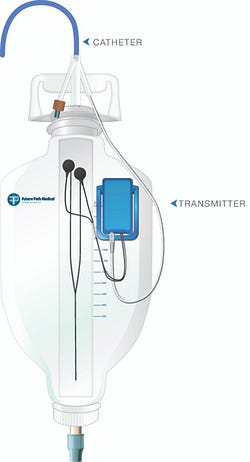
Bengaluru based start-up TerraBlue XT has developed two innovative products, TJay and Xaant. While TJay is a solution for predicting and managing epilepsy; Xaant is a therapeutic wearable device that traces mind’s pathways to generate realtime data. TJay is a glove with sensor attachment and an ML/ AI-based software solution that provides predictions before the onset of epilepsy. The purpose is to enable safer and good quality life for the patient and also enable the doctor to provide timely care and intervention. The company describes its second product, Xaant (pronounced ‘Shaant’ meaning calm in Sanskrit), as ‘a wearable device to cultivate calm in your life’ as one can recognise what makes you anxious, what triggers your anger or what leads to your stress. This information in turn can be used to train oneself to become stronger in the face of adversity. Xaant, worn as a smart strap or as a smart jewellery tracks the mental wellness of the individual and monitors causes of stress, sleep quality, heart health and effects of calming techniques in maintaining calmness of the mind.
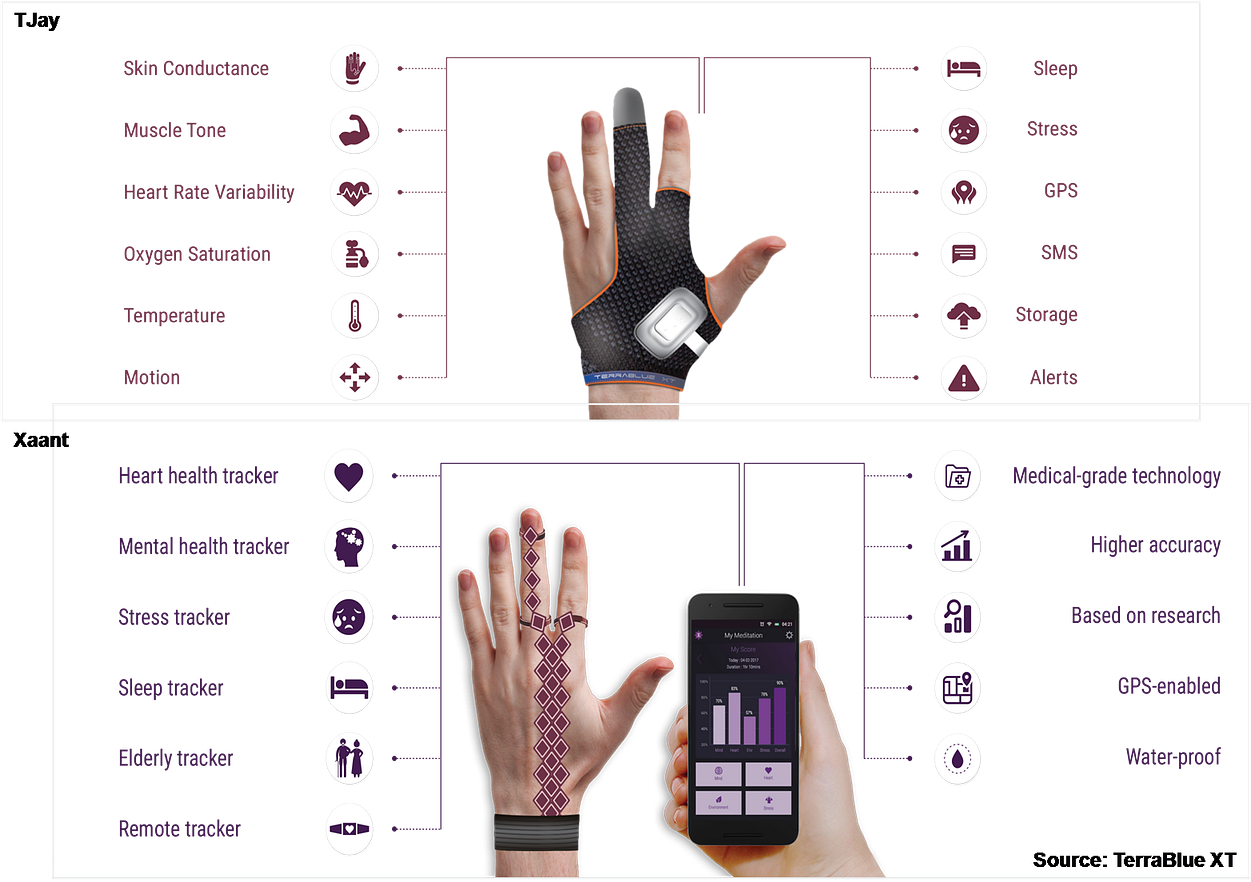
Telemedicine and healthcare delivery in hard-to-reach geographies and rural areas is another aspect of IoT being employed for personal as well as community healthcare.
IoT is everywhere! Device manufacturers are connecting devices to the IoT, using additive manufacturing (3D printing), producing wearable electronics (“smart” clothing, skin-adhered sensors) making remote and continuous monitoring of a patient’s health possible. With an aging world population, the rise of chronic diseases and their treatment costs, and the shortage of medical staff for long-term care, medical care will likely be migrating, in part, from hospitals to home care. IoT resonates well with this shift and will be at the forefront of healthcare of the future.
Data Explosion!
The exponential rise of data from devices does not mean anything in itself till it is converted to information that others can use. Data that is converted to knowledge will also have limited use unless converted to valuable actionable insights. These insights which will have tremendous value in specific domains need to further adapt to multi-domain, cross-functional wisdom for game changing strategies and sustained competitive advantage. Big Data is the product of an unprecedented spike in the number of connected things in recent times. At the core is Data Science that analyses data through algorithm design, AI, machine learning, statistics, modelling, etc., to make it work consistently in the real world, across different domains, across different infrastructures and for multiple users.
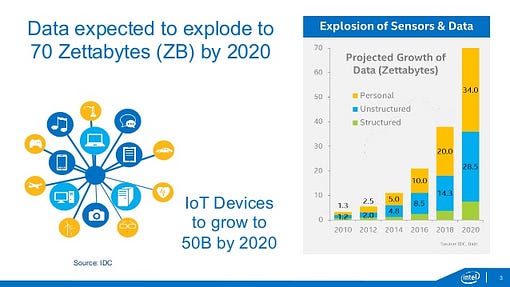
Mind the gap!
New technologies often have operational real world challenges before they become commonplace. IoT is no exception. The key aspects that need immediate redressal to accelerate IoT adoption are the following:
a) Security: Last year, the FDA took the unprecedented step of recalling 4,50,000 pacemakers which were vulnerable to cyber threats. Johnson & Johnson, last year warned its customers last year about a security bug in one of its insulin pumps. What this means is that a hacker could potentially administer a fatal dose to the user! Implanted devices are also at risk of being hacked and controlled by someone else!
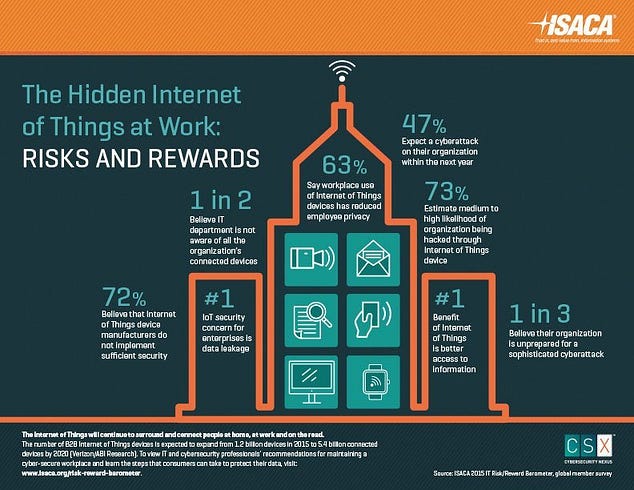
Security of data remains the paramount concern in a hyperconnected world. The sentiment is reflected in the escalating annual spending towards IoT security worldwide. Extreme automation of highly integrated systems poses vulnerabilities to systemic risks such as total network collapse in the event of failure of one of its parts, for example, by hacking or internet viruses that can fully invade integrated systems.
To address these asymmetries there is a need to consider a safe exit or containment strategy in the event of collapse of a section of the IoT network due to exposure to malicious software/ virus or other non-digital threats that can propagate rapidly in open networks. Various levels of security structures have been proposed and many are in development. These are mandated to build complex digital networks without compromising longterm safety and sustainability of an innovation ecosystem and its constituents The following are three measures to bring symmetry in future applications: (a) Considering built-in safe exits from the digital networks; (b) Recognising the need for both acceleration/deceleration; and © Innovation in global governance for technology policy.

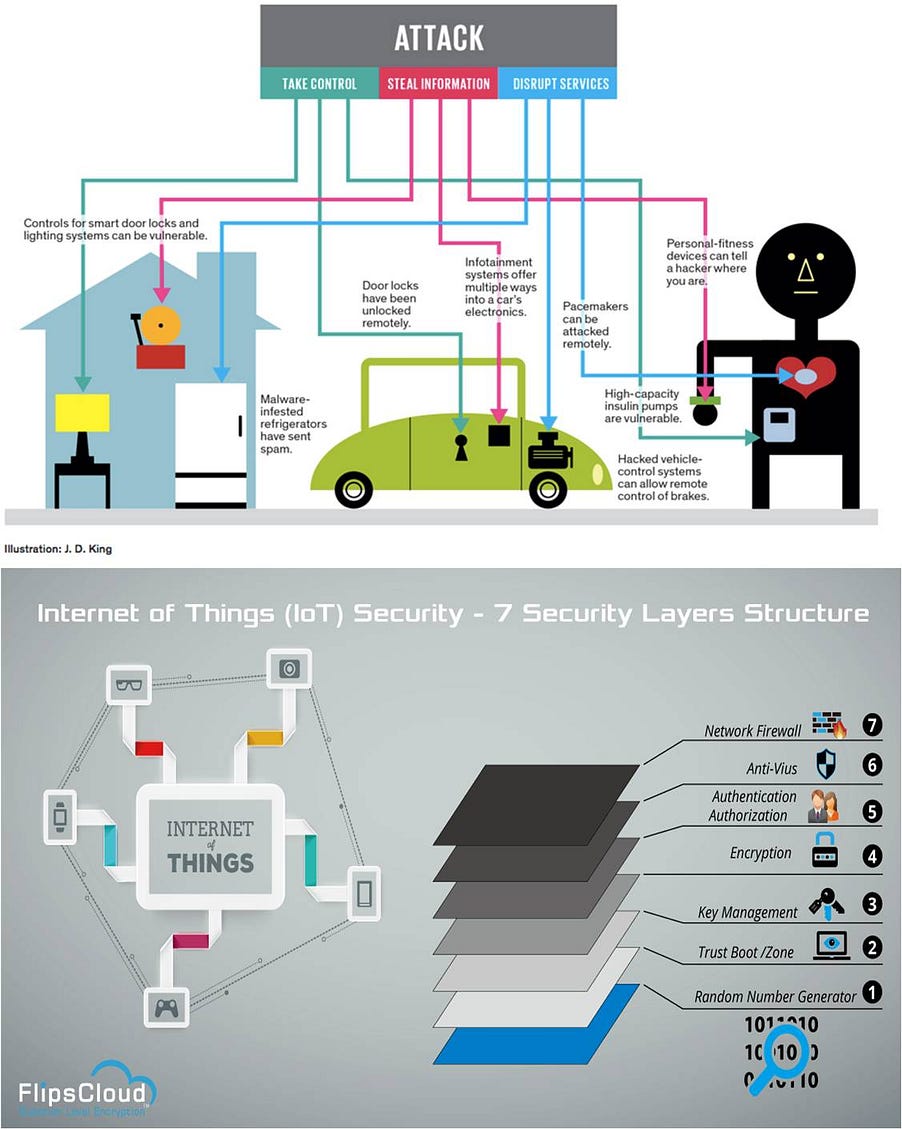
Some companies have already taken a lead in this space. Intel provides a combination of technologies from Intel, Wind River and McAfee that incorporate the security layer in the hardware, embedded operating system and security software to ensure end-to-end security in a smart grid. These features are unalterable by rogue software and run applications in a safe partition while protecting crucial platform data and keeping malware from launching.
b) Inter-operability: With multiple companies providing various IoT-enabled services and products across different domains, the risk of fragmentation of information leading to limited access and use of different formats of data may become a bottleneck in adoption and maximising the potential of connected things. The need for seamless integration of platforms and networks thus become crucial.
For better communication between platforms this means the coming together of a broad range of protocols, including 2G, 3G, LTE, LTN, WANs, and the involvement of specialist telecommunication service providers, hardware and software companies. IoT offers a tremendous opportunity if data existing in unconnected infrastructures are optimally realised. Open interoperability standards and common architectures are essential for connecting legacy devices to data centres and cloud infrastructures which will enable end-to-end analytics which will in turn realise its benefits. This is by no means an easy task; however, the initial steps have been taken in this direction.
AT&T, Cisco, GE, IBM and Intel have formed the Industrial Internet Consortium (IIC), a not-for-profit group with an open membership that will take the lead in establishing interoperability across various industrial environments. It is hoped that this will translate to a more connected world.
c) Privacy: Data privacy is a huge concern when data is being collected and uploaded in cloud servers, whether private or public. HIPAA (Health Insurance Portability and Accountability Act) sets the standard for protecting patient data that is created, received, maintained, or transmitted electronically. Since there are now sensors automatically collecting and storing medical data, security of individual data is even more critical. This has prevented many hospitals from adopting network capacities for patient data and other medical information.
At the end of 2017, North America, Western Europe, and Greater China represented 67% of the global IoT. This leads to the second concern that is more social than technical — extreme connectivity creates new social and political power structures. This could lead to authoritarian or dominating governance by a few who are in total control of the networks either directly or indirectly through their connected surrogates. New models of effective use of digital power and governance are already being suggested within the so called Industry 4.0 Plus or Industry 5.0. The ethical, legal, and social implications (ELSI) of this are also under academic debate.
Dr. Pesala and Dr. Lakshmanan highlight a few other concerns pertaining to efficient use of IoT for large-scale implementation, namely standardisation and data interoperability, and the relatively high cost of deployment of IoT systems. There is a lack of standard for authentication and authorisation of IoT edge devices and additionally, security standards for platform configurations are immature. The design of many IoT systems are poor and implemented using varied protocols and technologies that sometimes create complex and conflicting configurations. Additional inadequate cybersecurity measures by many IoT operators remain a major concern.
Efforts are already underway to enable seamless data exchange and analysis between platforms. The cost of IoT systems is also on a decline as more and more sectors adopt these systems. In a few years it is expected to come down further with more stakeholder engagements.
What we’ve witnessed thus far is just the beginning, essentially the tip of the iceberg. The near future holds immense promise as IoT, slowly and steadily, creates the backend of virtually all sectors, whether current or emerging, as we know today.
